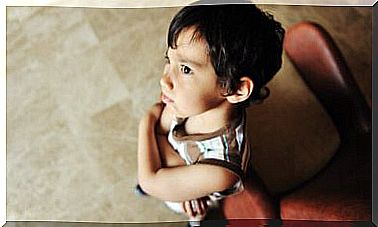What Foods Do We Choose When We Are Little

L os babies know that plants provide food, but they need to be sure that they can eat. This is demonstrated by a recent study on selective social learning carried out in babies between 6 and 18 months of age about their willingness to eat vegetables.
A recent study highlights the importance of social learning for the development of food preferences. During the research, it was explored whether social information about the edibility of vegetables (an adult puts something in the mouth) can be linked to certain types of realities. Since humans have relied on collected plant resources over evolutionary time, and given the costs of trial-and-error learning, the researchers predicted that infants might possess selective social learning strategies that would help them quickly identify plants. groceries.
Evidence from studies with babies between 6 and 18 months of age showed that children selectively identify plants as a food source over other objects, after seeing the same socially relevant information about food applied to both items. These results are the first evidence of the social mechanisms for learning specific content that facilitate the identification of edible plant resources. These learning mechanisms have enabled humans to survive and thrive in varied and changing environments.
Babies as young as six months old tend to expect plants to be sources of food, but only after an adult shows them that the food is safe to eat, according to a new study published in Psychological Science.
The results show that, after seeing an adult put part of a plant and part of a man-made object in their mouth, babies between 6 and 18 months of age preferentially identify the plant as a food source.
“Plants are often peripheral to modern life, but they were at the center of fundamental problems in determining what was food and what was deadly throughout evolution,” says Yale University Professor Annie Wertz. , author of the study. “Humans depended on the plant resources they collected for, but many plants are toxic and potentially deadly.”
So how do babies learn what is good to eat and what is not? In this sense, Professor Wertz and Karen Wynn, co-author of the study, point out that “the decisions of young children about what to eat, as is known, are not determined simply by copying adult behavior.”
Wertz and Wynn’s hypothesis that instead of directly mimicking adult behavior, children tend to go looking for certain types of plants only when an adult does it first. To test their hypothesis they did in four experiments.
The 18-month-old babies were presented with a realistic-looking artificial plant and a man-made artifact, each of which had nuts attached to it. The babies observed an adult take one fruit of each object (of the plant and the artifact) and place it later in their mouth as if they were going to eat it. The fruits were placed outside the plant and the artifact and the babies were asked which of them could be eaten. The babies showed a clear preference for the fruits that came from the plant, even though they saw the same social information applied to the two elements.
Further experiments showed that eating was crucial to this plant inclination. Thus, when the adult placed the fruits behind the ear, or simply looked at the plant and the artifacts instead of performing an action, the babies chose at random.
Younger babies, who have little or no experience with solid food, also showed evidence of being inclined to plant-based items. The six-month-old babies stared longer at what was happening in the adult’s mouth when the fruits in the artifact were approached, suggesting that this violated their expectations for their edibility.
“Together, these experiments show that babies use adult social information to quickly and selectively identify plants as food sources, ” says Wertz. “More generally, this suggests that humans, unlike other non-human primates, do not simply consider everything that enters the mouth to be food. Instead, they also take the type of object into consideration. “
Wertz points out that this social learning mechanism works in conjunction with other mechanisms, including sensitive periods for learning about food and aversions to certain tastes, such as bitterness, which can be a sign that something is poisonous. “Learning about human food is complex, and we are only beginning to scratch the surface of these important questions,” says Wertz.
On a practical level, Wertz believes that parents of young children may be able to take advantage of these findings : “Knowing that infants may be predisposed to knowing that fruits plucked from leafy green plants are edible suggests strategies for that young children are interested in eating new fruits and vegetables ”. In this sense, Professor Wertz suggests as an activity to take the children to collect their own fruits and vegetables.









